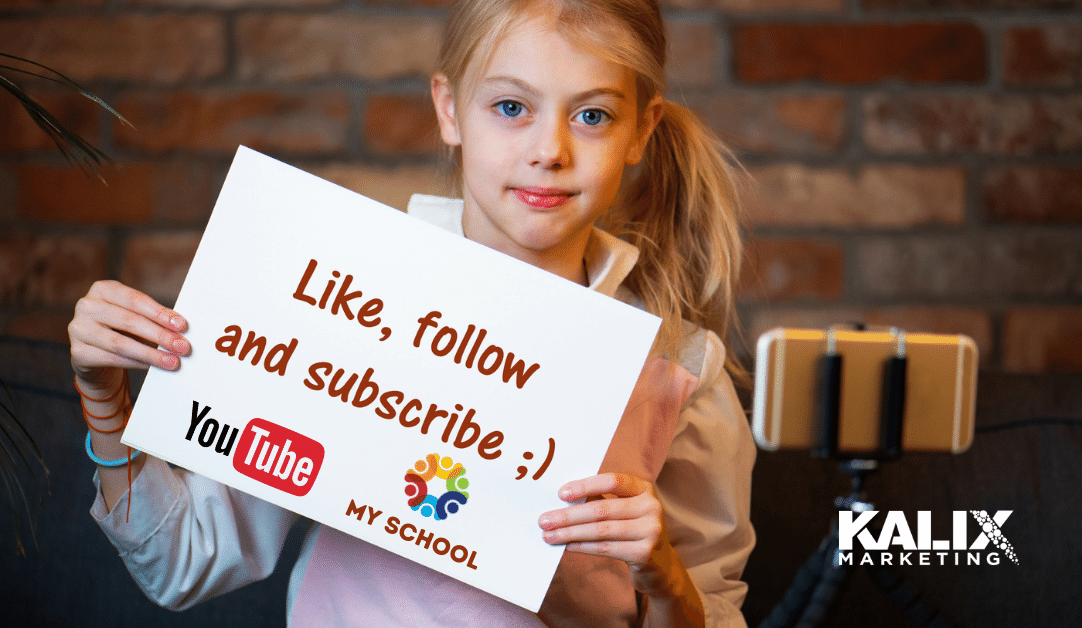You may think of YouTube as a hub for viral videos or a great way to find tutorials, but have you thought about using YouTube as a search engine? YouTube is the second most commonly searched platform on the web next to Google and is a great way to optimize your school’s video content and out-rank your competitors.
Videos are an excellent way for prospective students and their families to see a virtual view of your campus, activities and students and get a feel for your school’s environment. By picking important topics and focuses for your videos, you can tailor your video titles to what real students are searching to learn more about the admissions process and finding the school with the right fit.
Once you’ve crafted your video content, it’s time to start researching keywords and writing copy that aligns with the interests of prospective families in the admissions process. Optimizing your YouTube videos will make it easier for your school to be found through search and offer a holistic view of what your school can offer.
Organize, strategize and create clear content pillars.
Plan your video content around relevant topics and information. Save your videos in playlists that you create. Playlists categorize videos and make it easier for viewers to find what they want to watch. They can hold different content that pertains to things like STEM, the arts, sports and faculty highlights and can also boost results in search.
Aligning on what content is pertinent to the admissions process will allow you to tailor your YouTube video creation to what exactly is being searched and sought after by prospective families for higher-production quality videos. On the flip side, other content such as school musical footage or content gathered from parents and students at your school’s basketball games can be a great added value to videos on your channel and give prospective students a behind-the-scenes look at activities.
Use Google Trends to determine keywords that are being searched by prospective families. This can help you determine what to title videos and playlists. Use these keywords in your video titles, descriptions, and tag words.
Write clear and purposeful descriptions.
Carefully adding hashtags, keywords and keyphrases into your video descriptions will allow your content to appear higher in search results for the various concepts prospective families are searching – either about the admissions process or your school specifically. Be sure to research popular search terms through YouTube or on Google Chrome Extensions like TubeBuddy.
When adding hashtags to your video descriptions, prioritize the first three hashtags, as those will appear above the title of your video and will be most pertinent for SEO. Overall, stay within the boundaries of 15 total hashtags, best placed at the very end of your description.
Did you know that you can include a standardized description of your school that appears on all the videos that you upload? In YouTube Studio, under “settings” and “upload defaults,” add various tags to your channel and write a description that will appear at the bottom of all your videos. Remember to also create and insert an individual description for each video as well before finalizing your upload.
In addition to this, add in links and CTA’s that will drive viewers directly to your school’s website (and other social sites) encouraging families to learn more. Just don’t dump someone onto your homepage. Be strategic about where your viewer lands.
Read our blog post about best-practices for landing pages.
Consider adding trackable links so you can see how much traffic is being driven to your website from YouTube, which you can analyze through Google Analytics. These links can be created on sites like UTM.io and customized directly on Bitly.
Don’t forget to brand your YouTube video channel.
When prospective students come to your YouTube channel, the page should be instantly recognizable and identifiable with your school’s branding and logo. This can be done in the “customization” section in YouTube Studio. Consider adding a jpeg file of your logo to appear in the corner of every video you upload for increased visibility. Using Canva, you can easily create a profile photo and banner for your YouTube channel, as well as any additional cover photo graphics you may need for video thumbnails.
Adding an anchor video that will appear immediately when a prospect comes to your channel could be the first impression a family has of your school’s brand. Make sure this video encompasses an overall message and theme for prospective families at any time in their admissions journey.
Also including playlists to your channel’s home page, which can be added in the branding section of YouTube Studio, will point them in the right direction to watching more of your content that interests them. Write thoughtful and keyword tailored descriptions for your playlists as well, which will help in the long run for your SEO strategy.
When you categorize your videos, you can review the performance of individual content and overall playlists in YouTube analytics. Analyzing reach and traffic sources can help you determine what users are searching on to find your content and the means to which they are finding it internally or externally. YouTube analytics will also inform you how interested viewers are in your content by the length of time they watch the video – this is important information to know for creating future videos. If viewers drop off your videos early on, you might consider crafting shorter videos for upload.
Knowing your target audience and branding to them is incredibly important in making your school stand out against your competitors. YouTube is a great opportunity to engage and attract and is the perfect platform to link out to or embed on your website or through emails.
Post and repurpose often.
If you are posting TikToks or Instagram Reels, see if you can edit content to the 16:9 dimensions for YouTube as well for repurposing videos you’ve already made. Recording live or virtual events are also a great way to manage posting more on your channel. Video content creation tools such as Soapbox allow you to screen, record and edit videos in a matter of minutes.
Once your content is ready to be posted, be sure to create a content calendar for video roll out. After gaining momentum, try to, on average, post two videos a week on your YouTube channel and link out to your videos through blog posts to continue driving traffic.
Maximizing the opportunities available on your branded YouTube channel will increase the potential for prospective families to find your school and engage with meaningful content. Creating a strategy and sticking to a plan will allow you to get the most out of your social platforms and meet students where they currently are already searching.
About Channing Capacchione, Kalix’s Digital and Communications Associate

Channing is pursuing a M.A. at Emerson College in Digital Marketing and Data Analytics. She received a B.S. in Advertising and Sociology from Boston University, where she worked as a student admissions representative, tour guide and student speaker at Boston University Admissions Center. She also interned with the Boston University Marketing department designing flyers and handouts, writing copy and aiding with website development. Channing attended Garrison Forest School, an all-girls’ independent school located in Owings Mills, Maryland. During her 14 years there, she led the tour guide program and worked with the school’s admissions and communications department on video and website projects to engage prospective families.

